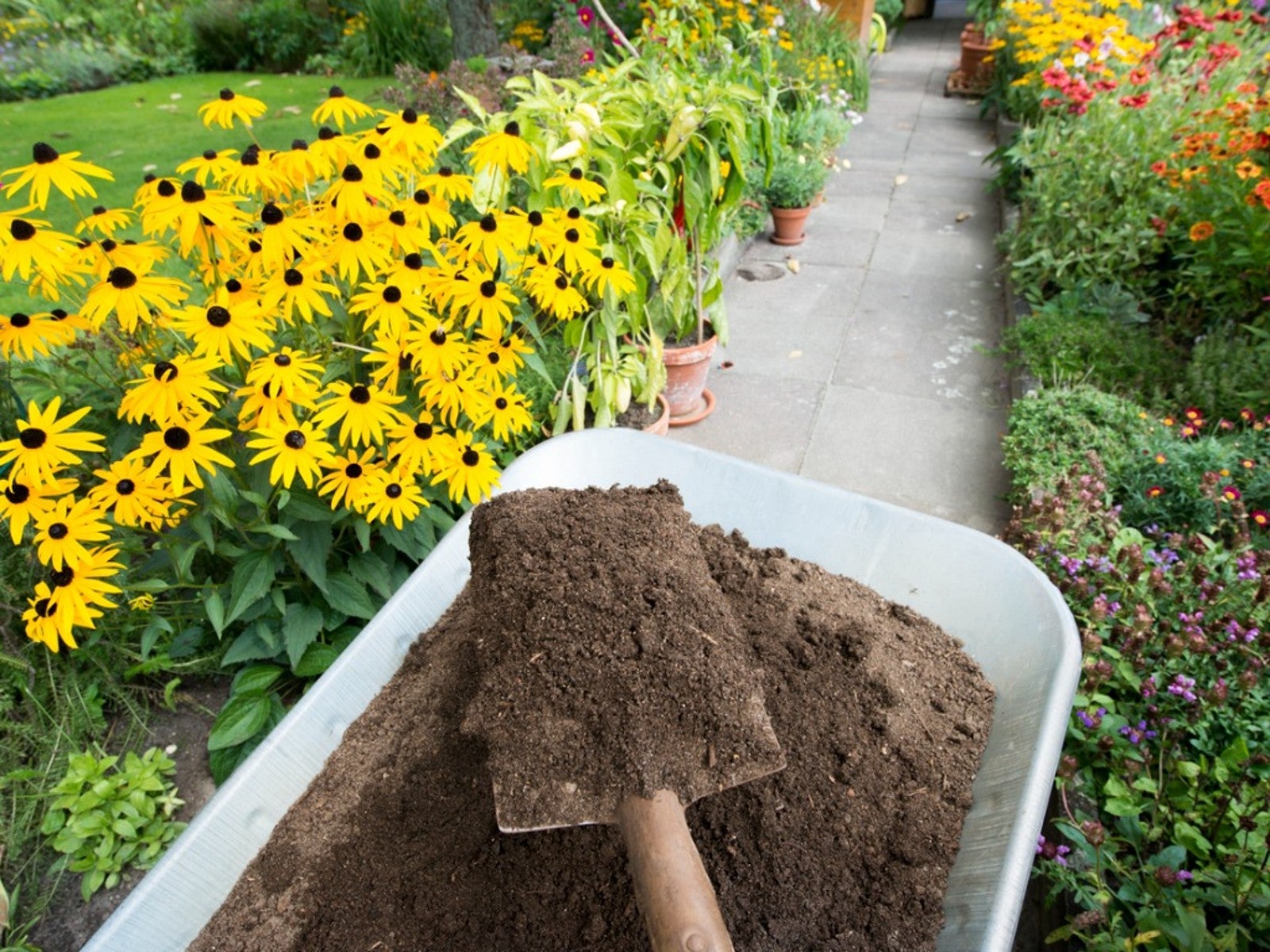How To Add Compost To Established Garden Beds


Soil health is one of the most important factors for our plants. Over time, soil may compact, lose nutrients, or even change pH. These differences can be altered by amending soil with compost. Knowing when to put compost in garden beds may take a little investigating. Learn how to add compost to garden soil to improve plant health, drainage, and water retention.
Adding compost to existing plants will slowly feed them as the compost continues to break down. It also prevents some weeds, keeps soil moist, helps regulate the temperature of the dirt, and has many more benefits. How to amend soil around existing plants with compost depends upon the age of the plant, the use for the compost, and even the time of year.
When to Put Compost in Garden Beds
There are several reasons to add compost to your soil. Compost increases the tilth or structure of the soil. It helps increase percolation while simultaneously capturing moisture. Adding compost to garden soil increases the micro-biome of the soil. The enhanced bacteria and tiny critters break down the compost making it even more readily available to plant roots. Good compost can also minimize some pests and diseases.
If the goal is improving soil structure, mix compost in the soil in fall. For blooming plants, apply as a mulch, or mix into the soil prior to planting. In the vegetable garden, add compost to soil in spring, or mix into the soil in fall. Lawns can benefit too. In spring, aerate the lawn and spread a thin layer over the grass blades.
How to Add Compost to Existing Plants
In ground plants like perennials may not need extra compost annually. Giving established plants too much fertilizer can cause them to get leggy and floppy. But plants such as annuals and vegetables can greatly appreciate the addition. When adding compost for such plants, mix it into the soil prior to planting. Ensure the compost is well rotted to prevent hot soil. Over time, the compost will further degrade slowly, releasing nutrients to plant roots. Alternately, compost may be applied as a side dressing, especially in vegetable plots.
What and How Much
You may decide to purchase compost or make your own. Compost is well rotted organic material and may include kitchen scraps, grass clippings, leaf litter, or manure. Make sure the compost is well rotted and not too hot, or it may burn plant leaves and roots.
The amount depends upon the situation. In heavily cropped sites, more compost needs to be added to return soil health. As a rule, mix in 1-3 inches ( 2.54- 7.62 cm.) to vegetable garden soil prior to planting. Around trees and shrubs the same amount may be used as a top dressing. Around flowers, layer the compost around plant stems. In all cases of top dressing, keep the compost from touching stems and trunks to prevent rot issues.
Gardening tips, videos, info and more delivered right to your inbox!
Sign up for the Gardening Know How newsletter today and receive a free copy of our e-book "How to Grow Delicious Tomatoes".

Bonnie Grant is a professional landscaper with a Certification in Urban Gardening. She has been gardening and writing for 15 years. A former professional chef, she has a passion for edible landscaping.
-
 Looking For Plants To Give You The Soft And Fuzzies? Try These 5 Fuzzy Leaf Plant Options
Looking For Plants To Give You The Soft And Fuzzies? Try These 5 Fuzzy Leaf Plant OptionsLovers of texture, drama, silver foliage and tactile plants will adore these special sensory garden additions. These fuzzy leaf plant options will leave you all aglow
By Susan Albert
-
 Get Ready For A Summer Of Hummers! Grow These Full Sun Hummingbird Plants and Flowers
Get Ready For A Summer Of Hummers! Grow These Full Sun Hummingbird Plants and FlowersIf you’re lucky enough to enjoy a sunny backyard, make sure you are maxing out on your pollinator opportunities and grow these full sun hummingbird plants and flowers
By Tonya Barnett